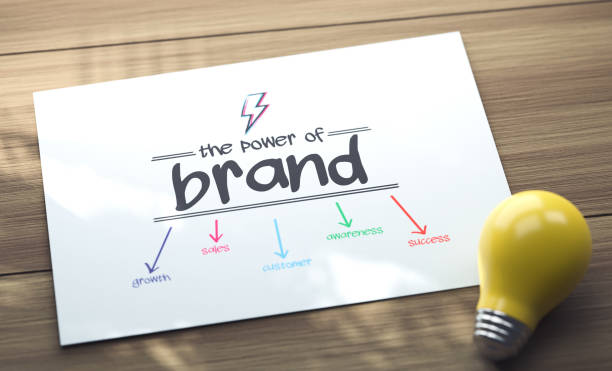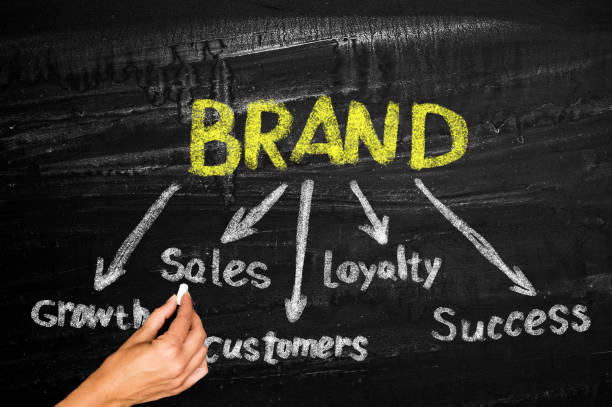How to Build a Strong Brand Identity
The rising market competition requires organizations to create great brand images for their success. A small entrepreneurial business firm, alongside established business ventures, requires developing an excellent brand image to achieve organizational success. One needs to understand how organizational branding connects its identity to customers while maintaining trustworthiness. This piece of work begins by explaining how to build a strong brand identity step by step before providing advice to strengthen brand image.

What is brand identity?
Before launching a successful brand image, one must understand its fundamental definition. A business gains market perception through its brand identity, which describes how the market views its business experience and recognition. Your business gets unified expression through everything you utilize to represent it, starting with the logo and extending to colors and typefaces as well as messaging and overall consumer experience.
Businesses need brand image to function effectively because it represents both company design elements and core mission goals. A business needs a brand image to establish itself in the public market while building customer loyalty and segmentation against competitors.
Strong brand identity achieves two essential market goals, which are product and service promotion for particular companies while simultaneously minimizing customer promotional actions.
- Multiple benefits follow from creating a powerful brand identity, which provides benefits to your business organization.
- Constant branded communications produce consumer familiarity, which makes the business stick in their memory during their buying decision.
- Each conversation requires your audience to feel comfortable working with you because you show professionalism in running your business.
- Business success depends on differentiating competence because every organization must develop special market characteristics.
Products that create emotional connections with consumers become simpler to purchase again and spread recommendations about the brand because consumers develop personal relationships with them.
The information about brand identity is established, so let us review the steps of how to build a strong brand identity.
Steps to Build a Strong Brand Identity
1. Purpose Statement and Values Statement
The initial step begins with establishing both purpose and core values for the monitored brand. Why does your business exist? What do you stand for? Two important questions should be answered when producing an effective brand message for the target audience.
Danger Group should answer the following questions to establish their brand purpose while describing the case.
How does my business serve the demands of society?
A company represents the main customer base for career service providers; thus, the definition of career service must match the specific requirements of each firm.
I placed vital value points in this order:
Brand purpose, together with values, serves as the fundamental foundation to build future brand image development strategies.
2. Understand Your Target Audience
Understanding the target audience of a specific brand demands utmost priority in brand development. Who are your ideal customers? You need to understand your customer base regarding their preferences, their difficulties, and their behavior patterns. An understanding of your audience permits you to create a brand communication that feels personal and directed to your target consumers.
Several key elements should be evaluated for defining the audience.
- Your audience consists of customers who are of specific ages and genders located throughout different regions and earning different incomes together.
- Customers display psychological attributes that include their interests and values alongside their behavioral patterns and individual lifestyles.
- As you identify the weakness and threat areas of your target customers through SWOT analysis, determine which features of your solutions carry the greatest significance to their needs.
- Your business will achieve consummate brand image delivery by understanding your clients for F2F engagement.
Create both a brand logo and supporting graphical artifacts that will enhance project quality and value.
The physical manifestation that stands out most to your audience is the element of your brand image. Font and color choices may create memories for the audience while the symbol creates a similar effect. To achieve successful visual identification, the principle of consistency remains the most vital element.
- Your logo should identify important traits of your brand when you create it. A simple design approach should guide your theme because easy application combined with clear distinguishability needs to remain your priority.
- Colors act as triggers for customer emotions because they carry specific meanings. Your choice of colors should reflect the particular feelings that you want your customers to experience.
- Nice sunglasses online in Australia; PayPal must match your organizational tone so they serve as part of your typography elements. Any platform viewing the document needs easy-to-read fonts, which should be properly implemented according to the platform.
Remember, consistency is key. All visual elements in your website, social site, marketing pieces, or package design must maintain consistent relations between pictures, icons, symbols, colors, and shapes.
A consistent voice and message for the I-novel will be built as part of this activity, which represents a narrative writing style featuring first-person storytelling with dialogue elements for use with foreign students during second language writing activities.
The manner through which your brand communicates with its audience consists of voice that can appear in written or spoken form. A brand becomes effective when consumers can easily recognize it through distinct combinations of identity and personality, which they link to their target audience.
- Those who establish their brand need to assess their options through the following questions.
- My brand adopts a tone that is either formal or informal.
- The voice should be friendly or authoritative alongside its tone, which can also be humorous or serious.
What method should I use when speaking with members of my target audience?
All company platforms need to maintain one consistent brand voice pattern throughout web content and social media interactions and customer support as well as advertisements.
Tell Your Brand Story
A business promotion relies heavily on this element because it enables positive perceptions to develop among target customers. Your brand narrative delivers three core elements to the target audience: an introduction of who you are and how you exist along with your position on their path. A compelling brand narrative makes a business more personable, which enables customers to develop emotional bonds with your company.
Your story should include:
- The founding of your business.
- The challenges you’ve faced.
- Your successes and lessons learned.
- How you’ve helped your customers.
A strong brand story infuses relatable and memorable brand qualities into the market, which produces dedicated followers.
Consistency is Crucial
After establishing a brand identity, the management must maintain absolute consistency across all its facets of the brand image. All information from the website to social media profiles and package shipping materials must deliver consistent reminders about your brand identity.
Consistency builds trust and recognition. Consumer experiences of brand failures will lead to confusion about brand qualities, thus putting the brand’s truth at risk.
Brand image development takes place through sustained surveillance processes.
A brand identity should be monitored through constant ongoing evaluation since minor adjustments often prove beneficial for maintaining brand image coherence. Your brand may need adjustments when you detect changes in your target audience who buy your products alongside their associated services.
The customer feedback requires assessment and tracking of market patterns while analyzing competitive companies. New brand visuals can be implemented successfully when needed, provided you enhance audience communication.

Conclusion: The Power of a Strong Brand Identity
Building a powerful brand image requires extensive planning alongside thoughtful examination and extensive professional execution at the tactical stage. Your brand needs clear objectives to determine its purpose, and you must establish specific clients, create a unique logo, and maintain a consistent branding approach.
Avoid thinking that legendary brand identity growth needs only one or two years to materialize. Your brand identity development spans several years before becoming a valuable source for customer loyalty while increasing your market presence and brand recognition. Succeeding in brand creation requires spending enough time to align the brand with a person’s real identity because this approach guarantees ultimate success.
FAQs
What steps do new enterprises need to take before they develop their brand identity?
A brand develops gradually to establish its solid brand image in the market. A brand identity development process usually extends from months to a year until the brand finishes its complete implementation. Sustainable growth depends on maintaining business improvement constantly.


















0 Comments